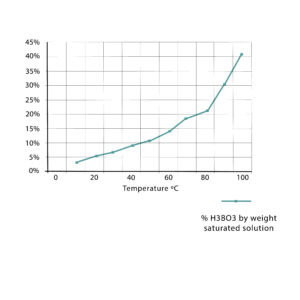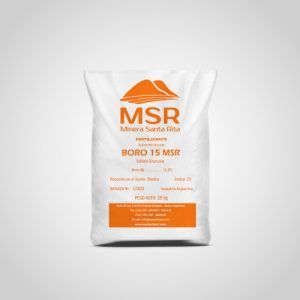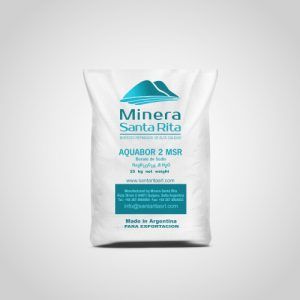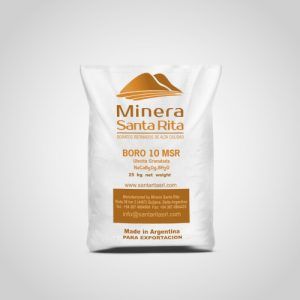Boric acid MSR is a white, crystalline and free flowing product used in the ceramics industry, fiberglass, borosilicate glass, wood protection, cellulose insulation, metallurgy, flame retardants, corrosion inhibitors and in agriculture as fertilizer and growth regulator.
Packaging
Granular Boric Acid MSR is available in 25kg polypropylene bags and 1,000kg bulk bags.
Boric Acid Powder MSR is available in 25kg polypropylene bags and 950kg bulk bags.

Applications and benefits
Boron is an essential micronutrient to the growth of all plants. Boron based fertilizers are usually mixed with other compounds or NPK fertilizers to correct boron deficiency.
Corrosion Inhibitor
Different Boric Acid formulations can be used as corrosion inhibitors and anti-freezing solutions (mixed with Ethylene Glycol in automobile motor cooling systems), as well as in brewing, heat treating, hydraulic fluids and to treat metallic products.
Glass and Fiber Glass
Boron fibers give high tensile strength and can be added to plastics to obtain a material more resistant than steel yet lighter than aluminum. Boron is mainly used in glass fibers and in borosilicate glasses which are heat resistant glasses containing at least 5% Boron Oxide. The heat and chemical resistance is attributed to Boron Oxide which, as a replacement for Sodium Oxide in the glass structure, creates an extremely low coefficient of thermal expansion. As a replacement for Sodium Oxide, Boron Oxide is also a powerful base that offers high quality heat and chemical resistance. Boron compounds are important components in the optical glass industry used to reduce thermal shock and mechanical impact while increasing durability and chemical resistance.
Ceramics
Boron compounds reduce significantly the melting point and can be used as essential ingredients in the production of ceramic frits and borosilicate glazes. Boric Acid is used to control the coefficient of expansion to ensure that the glaze remains fixed with the body without cracking or distorting.




